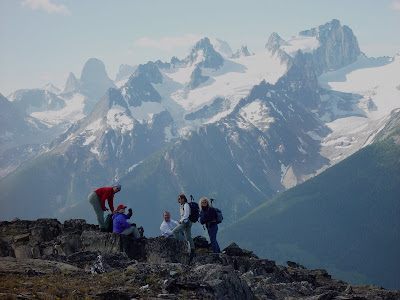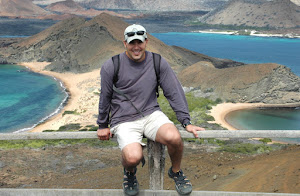
Elephants and humans have a rich and complex relationship. Elephants, of course, need no introduction. Everyone knows that they are the largest land animals on the planet. As such, they command our attention and respect. But really, even if elephants were the size of house cats, their caring nature, strong social bonds, long life span, and excellent memory would still intrigue people. When people learn that baby elephants spend almost all of their first nine years within touching distance of their mother they appreciate elephants all the more!

And, every human can relate to elephants when we watch them grieve over the loss of a herd member. A few weeks ago, I saw a fallen elephant lying under the shade of an acacia tree. She was either sick or injured and not able to stand up. All the other members of her herd were circled around her. They were touching her, providing her with added shade, and trying in vain to lift her to her feet. It was affecting. There was a baby elephant who was especially affectionate towards the fallen individual. Perhaps it was the baby’s mother, but more likely it was the first time this youngster witnessed death coming to one of its own.


Humans can relate when we see this compassion and it helps to strengthen our bond with elephants. Personally, I have a deep sense of privilege that I have been able to see so many free roaming wild elephants. I have spent enough time in the presence of elephants to know how intelligent they are and that, for the most part, they are gentle giants. These are some of the reasons why most humans view elephants with adoring admiration and empathy.

However, as with most things, our relationship with elephants is strained. Some people, mainly those who live and farm side-by-side with elephants, view them as destructive and dangerous. A few weeks ago, in the Bunda region of Tanzania, three elephants were “put down” by conservation officials after they ravaged the village’s agricultural fields. This is a common occurrence throughout elephant country. There are frequent calls among many local villagers to “cull” the herds. Unfortunately, this strain in our relationship has no easy solution.
Trophy hunters further strain the human/elephant relationship. I’ve tried; I mean I’ve honestly tried to understand what possible satisfaction there could be in killing a gentle giant with a high-powered rifle from a safe distance. I’ve participated in chat room discussions, online message boards, and have conversed face-to-face with several trophy hunters. I always hope to gain some insight into why anyone would pay thousands of dollars to murder an unsuspecting elephant in order to gain a head-mount and a savage story. Whom does this impress?
Ultimately, I am yet to discover any higher level of thinking or rationale beyond some primitive and unrefined human instinct to kill. Ask any trophy hunter
why they hunt and you will get the standard laundry list of justifications:
1) “…for the meat.”
2) “…animal populations need to be controlled.”
3) “…hunting is sustainable.” This can be true. The so-called “offtake” (number of individuals killed) approaches 5% annually of a “properly” hunted population – certainly enough to maintain healthy populations under most circumstances.
4) “…hunting is an important conservation tool.” Some game reserves are huge and hunters pay astronomical fees to take only a few animals. In fact, more land area in Africa is managed as game reserves than as national parks. Moreover, the revenue generated through hunting concessions can be used for conservation efforts. The Selous Game Reserve (in southern Tanzania), for example, receives over 80% of its revenue from hunting concessions and Selous is replete with healthy wildlife populations. Furthermore, and much to the chagrin of the hunting community, the cost of trophy hunting is about to increase substantially. A hunting license in Tanzania will be $50,000 next year (up from $10,000) and the cost to kill an elephant just tripled (from $5,000 this year to $15,000 next year). Experts predict that this increase will not discourage professional game hunters but will significantly increase game hunting’s contribution to Tanzania’s national economy.
5) “…hunting has a smaller environmental footprint than tourism.” It is true that most hunters are quite tolerant of rustic services and accommodations. They require less infrastructure, use less water, and insist on fewer first-class meals than the average tourist. Additionally, tourists can overwhelm an area in large numbers whereas hunters demand more privacy and space.
Most of this justification is true (assuming hunters are ethical and play by the rules). It is true that a small number of trophy hunters kill a small number of animals and generate large amounts of money with minimal environmental impact. Without hunting, many game reserves would likely be converted to marginal farmlands and more ecosystems and wildlife would be lost in the process.
So, it is disconcerting to concede that I am partly thankful that there are human beings willing to spend thousands of dollars to “bag” innocent and beautiful creatures such as elephants.
Hunter’s, on the other hand, should not feel too good about themselves. Everyone knows trophy hunters do not travel to Tanzania to provide the locals with “bushmeat.” And, no hunter takes aim at an elephant because they may have less environmental impact than tourists on photographic safaris. An important reason
why individual elephants suffer at the hands of trophy hunters is because killing them gives trophy hunters a
"rush." This answer reveals something quite disturbing about the true character of trophy hunters and is conveniently left off their list of justifications. Simply put, killing elephants because it is a
"rush" is not defensible in the court of public opinion.
Taken as a whole, trophy-hunting elephants as a conservation tool leaves us little to feel good about and further strains the human relationship with elephants.

Undoubtedly, the most barbaric side of the human/elephant relationship involves elephant tusks and human greed. Elephants were slaughtered, wholesale, throughout the 1970’s and 80’s as the price of ivory skyrocketed. In only five years (from 1980-1985) the African elephant population dropped in half from about 1.3 million elephants to 700,000. Because elephants are so long-lived and have excellent memories, many elephants alive today must have witnessed, and therefore, are likely to remember the day a family member was gunned-down and de-tusked.
Some herds were wiped out completely and indiscriminately. Because elephants are so strongly dependent on the matriarch (their most senior female and leader), simply shooting her causes all the other elephants to gather around her body in confusion and absolute panic. Instead of running, they remain by her side until every last one of them is shot down. This unholy scene has been documented repeatedly throughout the dark days of the ivory trade. If our final judgment, as a human race, includes our treatment of these sentient beings for our material (but otherwise worthless) desire for their ivory, then there will be hell to pay (literally).
Someday, when the human race is more thoughtful and compassionate, people will look back on the days of trophy hunting and the ivory trade with much shame and embarrassment. Pictures of men with rifles standing over fallen giants and piles of tusks will be another black stain on an already checkered existence.
I sometimes entertain the possibility that animals, especially elephants, are able to pass judgment on us. On a number of occasions I’ve been within a few feet of wild elephants. One of the most profound experiences I have had in nature is to look into the eye of a 10,000-pound elephant and have it look directly back at me.

I believe that encased within that huge skull is a brain capable of judgment. If so, then it may be instructive (even if highly unscientific) to consider for a moment what elephants may think of us and consider, from their perspective, whether we are good global citizens. This makes me think of the elephants of Tarangire.
Tarangire is a national park in northern Tanzania. It is just over 1,000 square miles in area and contains approximately 3,000 elephants! This gives Tarangire one of the highest densities of elephants of any place in the world. However, these elephants can only be seen in the park during the prolonged dry season when they are pulled in from all over the region to drink and bath in the Tarangire River.

Here, the elephants see many people. Mainly, they are tourists in Land Cruisers on photographic safaris. Typically, the elephants appear too busy to be overly concerned with tourists. They generally seem unimpressed by us and tend to flat-out ignore us as they cross park roads and pass right in front of our vehicles.

But, occasionally a few individuals will come over to have a closer look. They might fan their ears, shake their heads at us, bluff charge, or raise their trunk and release one of their organ-shaking bugles.

Tarangire National Park is a sanctuary for the elephants and they seem to realize this. They seem to know that people in Land Cruisers do not harm them while they are inside the park. As a result, they treat us with indifference.
This relationship changes during the rainy season, however. During these months, the elephants must leave Tarangire for more nutritious vegetation outside of the protection of the park. As they migrate, the elephants are forced to pass through game reserves, local villages, and agricultural communities. It is here that they come into conflict with people. Suddenly, humans are not so passive or innocent. Tourists with cameras quickly become trophy hunters, poachers, and local villagers with rifles. Rare it must be, for an elephant who has not lost a herd member to a bullet.
So, if Tarangire’s elephants can pass judgment on us, then I wonder what their conclusion might be. Part of the year, they might describe us as harmless spectators, innocent, or even friendly. Another part of the year they might describe us as evil, violent, and murderous. Perhaps their overall judgment would include words like bipolar, unpredictable, and potentially dangerous.

From an elephant’s perspective, a concluding statement about the human race could easily read:
“an untrusting, adolescent race with the potential to mature into something good.”




















































